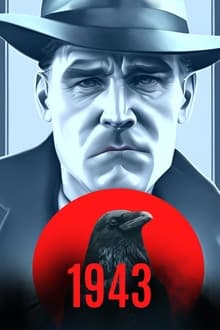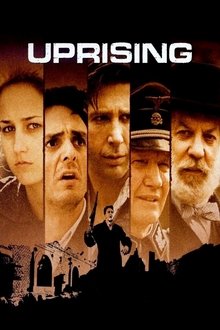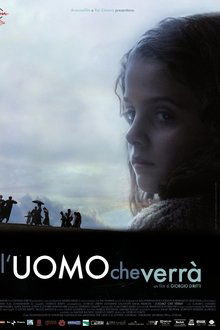Search

From the director of “Eden Prime,” “Hardline 2nd Term,” Kennedy Lucas’ next thriller expands to the era of the 1940s, when Detective John Clark uncovers the murder mystery of young impressionable women in the heart of Hollywood.

Gene and Finny are two boys who are best friends living in 1943, at the height of World War II. The idea that the boys will most likely be drafted when they turn eighteen is surrounding them, and they are practically forced to live their lives to the fullest. The two boys attend the Devon School, which prepares them for military life that they will most likely be subjected to. The film begins with a narration by an older Gene, traveling back to Devon some years later. The thing he wishes most to see is the tree, which had a great effect on the boys’ lives

1943 year. Alma-Ata. The hero of the film is a young Michurin fruit grower who revives a medicinal apple variety and investigates a strange crime. The script was written based on the book by Mikhail Zoshchenko “Before the Sunrise”.

Oscar winner William Wyler directed this 1944 “newsdrama,” narrated by Lieut. Robert Taylor, USNR (Bataan), and photographed in zones of combat by the U.S. Navy. The film follows one of the many new aircraft carriers built since Pearl Harbor, known as THE FIGHTING LADY in honor of all American carriers, as it goes into action against the Japanese in the Pacific Ocean in 1943. See the ship and its pilots undergo their baptism of fire, attacking the Japanese base on Marcus Island. Preserved by the Academy Film Archive in partnership with The Film Foundation.


In 1943, a German commando conceals a large quantity of gold in an undersea cave on the coast of Corsica. Years later, Schlumpf, the sole survivor of the commando, returns to Corsica to recuperate the treasure — with British and Soviet spies on his heels, and closely monitored by Dromard, from the French intelligence services. The monocled Dromard is convinced that he can outfox his opponents, but difficulties accumulate: despite his plump appearance, Herr Schlumpf is a sly fellow; Corsica is teeming with treasure hunters from various nationalities; and all parties readily resort to unnatural alliances, brazen treachery, and strong-arm tactics. Who will get the treasure?

The Secret Diary Of The Holocaust tells the extraordinary tale of a 14-year-old Polish girl, Rutka Laskier, who was murdered at Auschwitz in 1943. In 2005, the school notebook in which Rutka recorded her last months in the ghetto of Bedzin was made public, six decades after she hid it under the floorboards of her home there. Rutka was immediately dubbed the ‘Polish Anne Frank’. In her diary, Rutka wrote about her life in the ghetto in 1943, detailing not just the Nazi atrocities, physical hardship and hunger, but also how she was developing as a young woman. She also tells how she made a daring escape from one of the early ‘aktions’, Nazi round-ups of Jews for transportation. The documentary will unravel Rutka’s story through the eyes of her half-sister, Israeli academic Zahava Scherz, on a journey to Poland in search of the sister she never knew.

Get Cracking is a 1943 British comedy war film, directed by Marcel Varnel and starring Dinah Sheridan, Ronald Shiner and George Formby. It was produced by Marcel Varnel, Ben Henry and Columbia (British) Productions. This comedy explores the wayward rivalry between mechanic and Home Guard Lance Corporal George Singleton (George Formby) and an adversary also in the Home Guard (Ronald Shiner). When the rival Home Guard units of Major Wallop and Minor Wallop are sent on battle manoeuvres, George Singleton (Formby) launches his own unique style of commando raid against neighbouring Major Wallop to steal a Vickers machine gun. The raid fails and Singleton loses his Lance Corporal’s stripe, so he and a little evacuee girl named Irene (Vera Frances) decide to fall back on ‘Plan B’ – to build their very own tank.

In the 1943 invasion of Italy, one American platoon lands, digs in, then makes its way inland to attempt to take a fortified farmhouse, as tension and casualties mount.

In 1943, Noor Inayat Khan was recruited as a covert operative into Winston Churchill’s Special Operations Executive. With an American mother and Indian Muslim father, she was an extremely unusual British agent. After her network collapsed, Khan became the only surviving radio operator linking the British to the French Resistance in Paris, coordinating the airdrop of weapons and agents, and the rescue of downed Allied fliers.

1943 documentary with Ingrid Bergman.

In 1943, a group of high school students decide to take action against the Nazi occupying forces. Showing courage and imagination, they manage to blow up the Kommandantur and to release hostages. But after the killing of a German soldier the Nazi police apparatus strikes back. The young resisters are arrested and two of them are condemned to death.

In 1943, group of Croatian soldiers overtake a strategically important point in western Bosnia with a goal to destroy a group of communist partisans. On the way they met some supernatural phenomena, and the action itself went very badly because the partisans ambushed them. The main character Martin inherits silver cigarette case from a dying soldier. This act connects to the story in 1993 when we meet Martins grandson Tomo. He is one of six soldiers of the Croatian army who have come to the same place in Bosnia to meet the same phenomena and similar fate.

The October 14, 1943, mass escape from the Nazi death camp of Sobibor in Poland is recounted through the firsthand accounts of survivors Thomas Blatt, Philip Bialowitz, Selma Engel-Wijnberg and Semjon Rozenfeld.

Three Canadian Holocaust survivors, with unanswered questions from their past, journey back to hometowns, killing sites, and hiding places in search of clues in this new film. Maxwell wonders what happened to a baby he saved in a forest in 1943. Helen wants to know more about the fate of her brother. Rose wants to honour her mother and father by going to the places where they spent their final days. The survivors who appear in this film came of age during the Holocaust and carry the burden of knowing they are the last living link to it. This film delivers a powerful warning from history, inspiring stories of survival, and a last chance to solve lingering mysteries

During the month of October 1943, the Danish resistance movement and just plain ordinary citizens joined together in staging a mass exodus by fishing boats to neutral Sweden of their Jewish countrymen, practically on the eve of the Nazi’s planned round-up and delivery to concentration camps of all Jews. Story is told from the point of view of one Jewish family.

This film is based on the life story of Dietrich Bonhoeffer’s (German: 4 February 1906 – 9 April 1945) and his struggle against the Third Reich. Bonhoeffer was a German Lutheran pastor, theologian and anti-Nazi dissident who was a key founding member of the Confessing Church movement. Apart from his theological writings, Bonhoeffer was known for his staunch resistance to the Nazi dictatorship, including vocal opposition to Hitler’s genocidal persecution of the Jews. He was arrested in April 1943 by the Gestapo and imprisoned at Tegel prison for one and a half years. Later, he was transferred to Flossenbürg concentration camp. Bonhoeffer was accused of being associated with the 20 July plot to assassinate Adolf Hitler and was then quickly tried along with other accused plotters, including former members of the Abwehr (the German Military Intelligence Office). He was hanged on 9 April 1945, four weeks before the surrender of the Third Reich.

In 1943, while the Allies are bombing Berlin and the Gestapo is purging the capital of Jews, a dangerous love affair blossoms between two women – one a Jewish member of the underground, the other an exemplar of Nazi motherhood.

It is 1943 in Paris. Like so many others, the Bourbelle family’s home has been taken over by the Germans and they now live in their cellar. Little do they know that the son, Guy-Hubert Bourdelle, is far from being the cowardly hairdresser he pretends. He is in truth the Germans’ most feared opponent: le super-résistant!

January 1943: Admiral Karl Dönitz, head of the Nazis’ U-boat fleet, has brought Britain to the brink of starvation by ruthlessly destroying close to a thousand of their merchant ships. If the transatlantic shipping route is cut off, the Allies will lose their last foothold in Western Europe. The Royal Navy turns to retired war gamer Gilbert Roberts. Roberts is to use war gaming to try to decipher and combat Dönitz’s tactics. To do this, he needs a team, but the Navy can’t spare any men. Instead, he risks the ridicule of high command by turning to the Women’s Royal Navy Service (WRNS) to war game the U-boats’ tactics. In partnership with Jean Laidlaw, one of Britain’s first female chartered accountants, and a small team of resourceful female mathematicians, Roberts acts out naval battles and games the U-boats’ moves on a linoleum floor, using chalk and wooden model ships.

Martin Shaw takes a fresh look at one of the most famous war stories of them all. The actor, himself a pilot, takes to the skies to retrace the route of the 1943 raid by 617 Squadron which used bouncing bombs to destroy German dams. He sheds new light on the story as he separates the fact from the myth behind this tale of courage and ingenuity. Using the 1955 movie The Dam Busters as a vehicle to deconstruct the raid, he tries to piece together a picture of perhaps the most daring attack in the history of aviation warfare.

The Saturday matinee crowd got two cowboy stars for the price of one in this lavishly budgeted western serial starring former singing cowboy Dick Foran and Buck Jones. The latter contributed deadpan humor to the proceedings, making Jones perhaps the highest paid B-western comedy relief in history. The two heroes defend the Death Valley borax miners from an outlaw gang headed by Wolf Reade. An extraordinarily strong cast — for a serial, at least — supported the stars, headed by Charles Bickford as Reade, Leo Carillo, Lon Chaney, Jr., and silent screen star Monte Blue. Leading lady Jeanne Kelly later changed her name to Jean Brooks and starred in the atmospheric RKO thriller The Seventh Victim (1943). Universal claimed to have spent $1 million on this serial and made sure to get their money’s worth by endlessly recycling the action footage in serials and B-westerns for years to come.

Rome, 1943. The city is occupied by the Nazis. The lives of thousands of Jews are in danger, and in Vatican City, a neutral state within the borders of Rome, Pope Pius XII is struggling to save the city from hunger and destruction.

10 May 1943. Something is spotted drifting ashore off the coast of Northwest Donegal, Ireland. Something that would change the lives of the local people forever.

Rome, summer 1943. Four children play war while the bombs of real war explode around them. Italo is the rich son of the Federal, Cosimo has his father in confinement and an atavistic hunger, Vanda is an orphan and a believer, Riccardo comes from a wealthy Jewish family. They are different but they don’t know it and between them “the greatest friendship in the world” is born, impervious to the divisions of history that bloodies Europe. But on October 16 the Jewish boy is taken away by the Germans together with over a thousand people from the Ghetto. Thanks to Italo’s father Federale, the three friends believe they know where he is and, to honor the “spit pact”, decide to leave in secret to convince the Germans to free their friend. Yet another imaginative mission becomes reality, the three children travel alone in an Italy exhausted by war, among disbanded soldiers, deserters, occupying German troops, exhausted and hungry populations.

Fanny is a Jewish girl in a French orphanage in 1943. When she and her friends are no longer safe from the Nazis, they try to flee to Switzerland. After their guide disappears, Fanny has to take the lead and help the other kids make it over the mountains.

This gripping historical drama recounts the story of Armenian-born Missak Manouchian, a woodworker and political activist who led an immigrant laborer division of the Parisian Resistance on 30 operations against the Nazis in 1943. The Nazis branded the group an Army of Crime, an anti-immigrant propaganda stunt that backfired as the team’s members became martyrs for the Resistance.

In 1943, a childless couple, the Čížeks, decide to hide a Jewish refugee, David Wiener, the son of Čížek’s former employer, in the secret pantry of their apartment. Čížek is aware of the danger into which he has brought his household and his neighbours, but he takes helping his fellow man in need for granted. But at the same time, as a largely unheroic hero, he is dying of fear. His personal situation is greatly complicated by the approaching end of the war, when he faces danger from both the Germans and his “honest” fellow Czechs…

In the Warsaw ghetto in 1943, Jews rise against the Nazis.

Admiral Isoroku Yamamoto (1884-1943) was the Japanese Naval commander who was given the order to attack Pearl Harbour, an order he was duty bound to obey which went against his own personal beliefs. While this infamous attack is a low point in Japanese and US history it wouldn’t have happened if the Japanese government had listened to Yamamoto in 1939 and searched for a more peaceful way to end their war campaign, proving his many ominous presages of the outcomes of the attack to come true.

General Candy, who’s overseeing an English squad in 1943, is a veteran leader who doesn’t have the respect of the men he’s training and is considered out-of-touch with what’s needed to win the war. But it wasn’t always this way. Flashing back to his early career in the Boer War and World War I, we see a dashing young officer whose life has been shaped by three different women, and by a lasting friendship with a German soldier.

A group of Italian villagers struggle to survive during a tumultuous time in 1943, debating how much assistance to give the partisans with the impending arrival of the Germans. Based on True Events.

The true story of a British effort to trick the Germans into weakening Sicily’s defenses before the 1943 attack. A dead soldier is dressed as a British officer and outfitted with faked papers showing that the Allies were intending to invade occupied Greece. His body is put into the sea where it will ultimately drift ashore and the papers be passed along to German Intelligence.

Six vignettes follow the Allied invasion from July 1943 to winter 1944, from Sicily north to Venice.

September 1943: in the general confusion a thief dressed as a priest and a sergeant exchange clothes and roles.

The secret Nazi death camp at Sobibor was created solely for the mass extermination of Jews. But on the 14th October 1943, in one of the biggest and most successful prison revolts of WWII, the inmates fought back.

August 1943, Europe. The tentacles of the German octopus have begun to recoil. As the Nazis retreat, their concern focuses on the supply of oil from the refineries of Romania. Without the flow of “black gold”, Germany’s doom is sealed. Armadas of American bombers from bases in North Africa have begun to assault Pioesti – and there is another threat from the Partisans across the border of Yugoslavia. Against the tableau of spectacular events, the dramatic story of WILD WIND unfolds.

When the Nazi high command learns in late 1943 that Winston Churchill will be spending time at a country estate in Norfolk, it hatches an audacious scheme to kidnap the prime minister and spirit him to Germany for enforced negotiations with Hitler.

In 1943, as Hitler continues to wage war across Europe, a group of college students mount an underground resistance movement in Munich. Dedicated expressly to the downfall of the monolithic Third Reich war machine, they call themselves the White Rose. One of its few female members, Sophie Scholl is captured during a dangerous mission to distribute pamphlets on campus with her brother Hans. Unwavering in her convictions and loyalty to the White Rose, her cross-examination by the Gestapo quickly escalates into a searing test of wills as Scholl delivers a passionate call to freedom and personal responsibility.